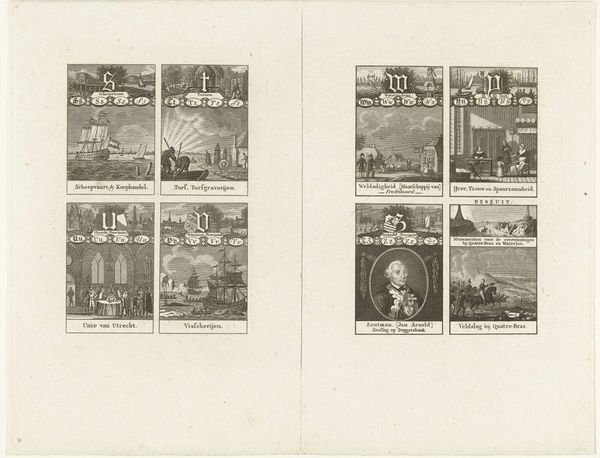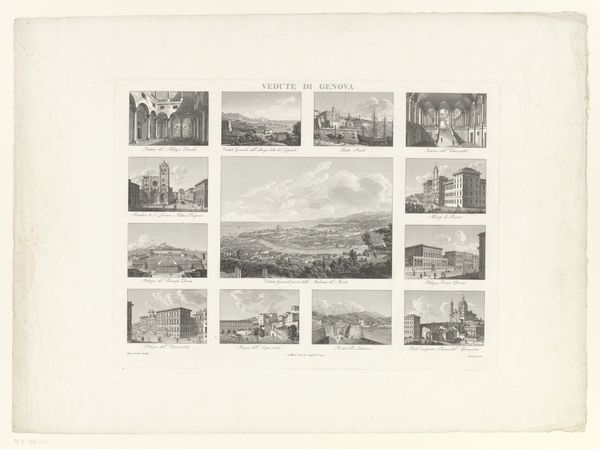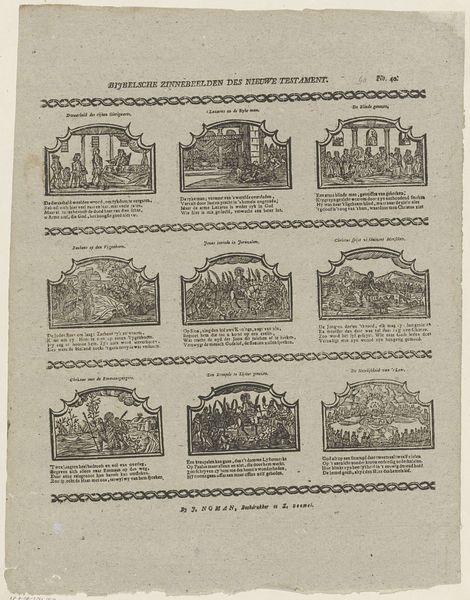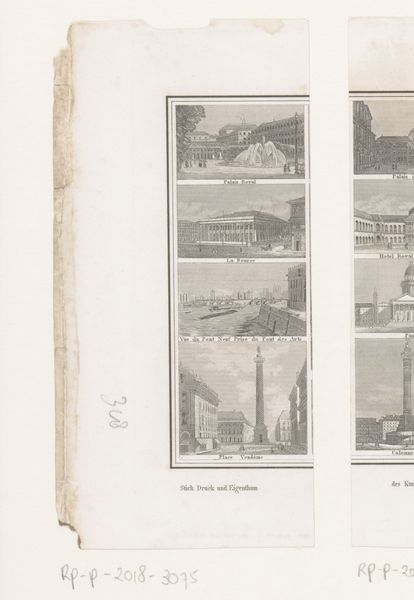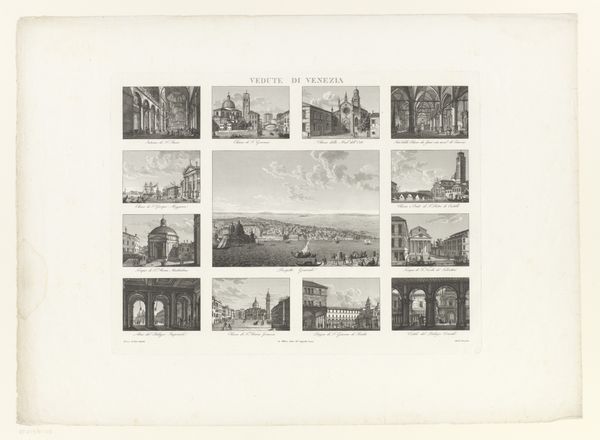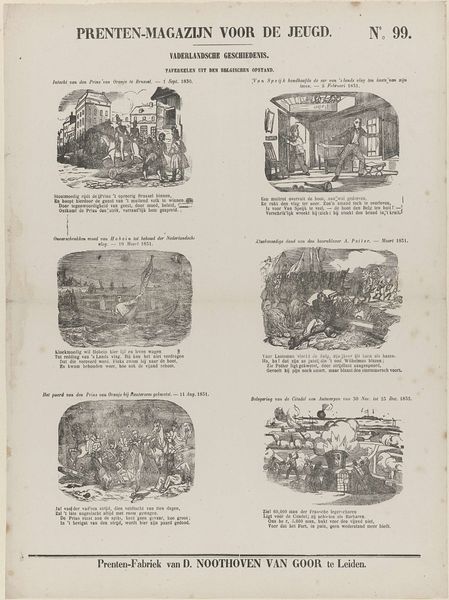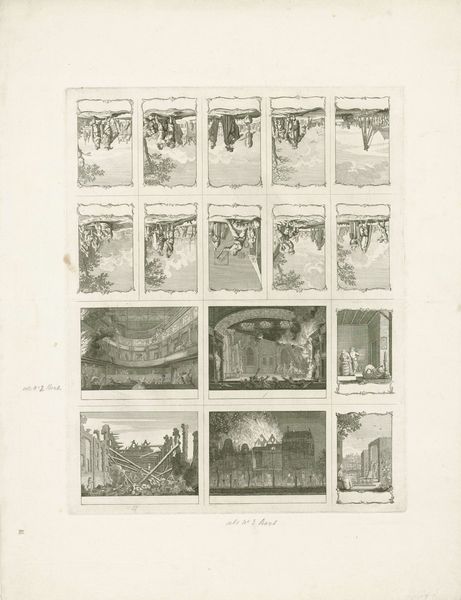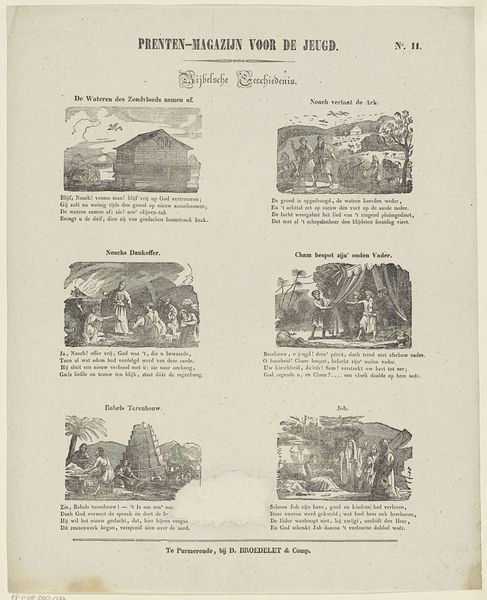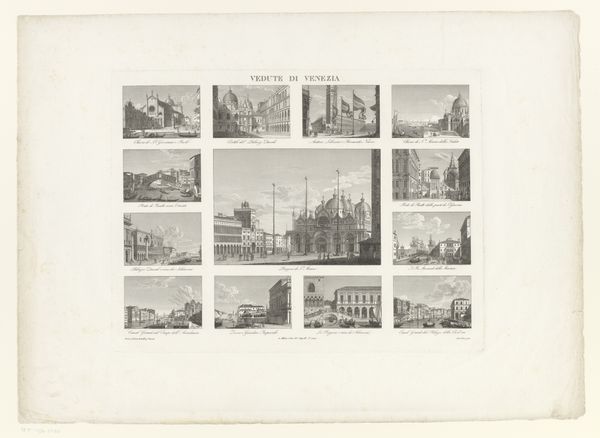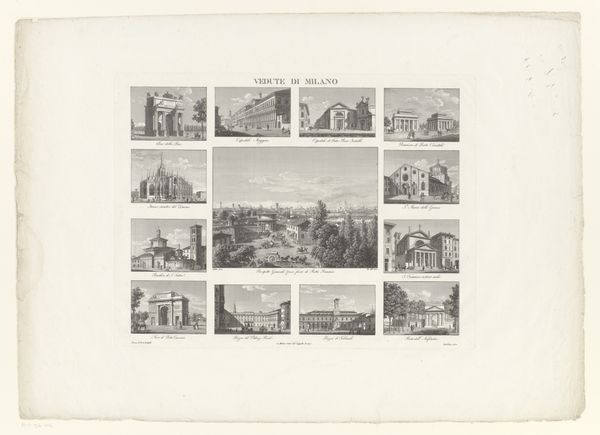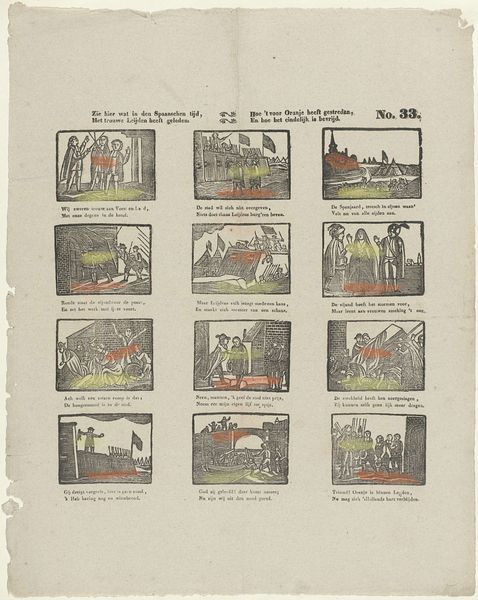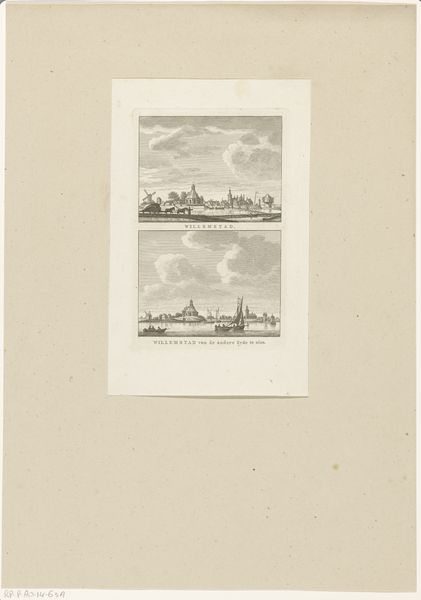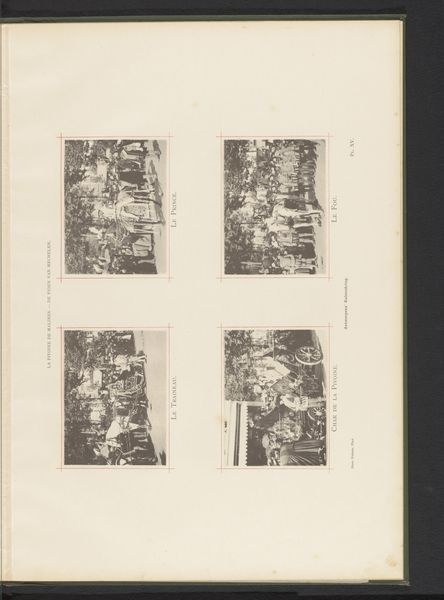
drawing, print, etching, engraving
#
drawing
#
light pencil work
# print
#
etching
#
landscape
#
cityscape
#
genre-painting
#
engraving
#
modernism
Dimensions: height 188 mm, width 265 mm
Copyright: Rijks Museum: Open Domain
Curator: Here we have "Blad A/B/C/D en Blad E/F/G/H," a fascinating print created by Philippus Velijn between 1821 and 1823, currently residing here at the Rijksmuseum. Editor: It's visually busy, almost overwhelming at first glance. There's so much fine detail crammed onto these pages; what kind of printing method did Velijn employ to get that fineness? Curator: He used a combination of etching and engraving to achieve this. The work reminds me of mnemonic image systems from the renaissance with strong links to Alphabets. Each section appears to showcase a letter adorned with imagery—historic, religious, everyday life—what feelings do the chosen imageries envoke within you? Editor: The engravings and light pencil work evoke an odd sense of ordered chaos, actually. I'm especially intrigued by the scene of the printing house ("Drukkerij")–you see people meticulously working; it puts me in mind of the artisanal skill and intensive manual labor needed to reproduce printed material on mass at that time. It shows a whole system. Curator: Precisely! And it highlights a crucial shift. Here are emblems reflecting Dutch identity, commerce and theology all interwoven within single illustrated letters, each building toward meaning as a whole. Editor: It makes one think about the layers of knowledge production – the intellectual, the artisanal, the symbolic… it's quite the complex representation within such small frames! The materials— the copper, the ink, the paper— were instrumental in making widespread communication accessible. Curator: Velijn gives the familiar alphabetical order a narrative of a place, which also invites you to look again for familiarity; perhaps even look for those connections and see yourself within it. Editor: Indeed. This artwork is much more than mere alphabetical examples—it's a fascinating exploration into cultural memory, production and visual culture through the alphabet, connecting skill, labor and knowledge into a tangible historical framework. Curator: It is an engaging conversation piece between national history and collective memory, wouldn’t you agree? Editor: I do, and thanks to Velijn’s use of combined media and the social themes explored here, these qualities can be rediscovered by all the curious onlookers who pause to examine this artwork.
Comments
No comments
Be the first to comment and join the conversation on the ultimate creative platform.
